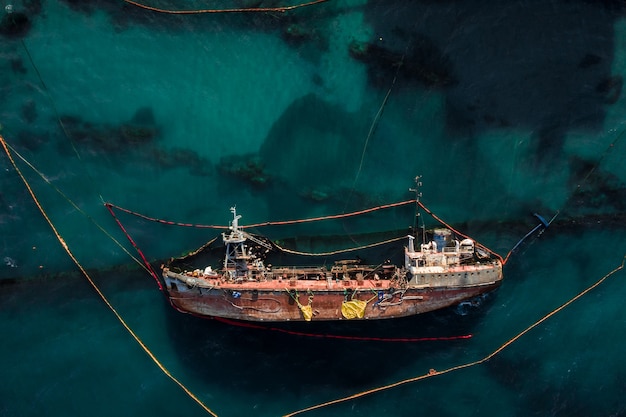Discover Fascinating Facts about the Titanic

The Titanic was the largest ship of its time, measuring 882 feet long and weighing 46,328 tons.
Despite its size, the Titanic only had enough lifeboats to carry about half of its passengers.
The Titanic’s maiden voyage began on April 10, 1912, departing from Southampton, England.
The ship’s first stop was in France, where it picked up additional passengers in Cherbourg.
After leaving France, the Titanic made its final stop in Ireland, where it picked up more passengers in Queenstown (now known as Cobh).
The Titanic was said to be unsinkable due to its advanced technology and safety features.
The iceberg that ultimately caused the Titanic’s sinking was first spotted by a lookout named Frederick Fleet.
The Titanic hit the iceberg at approximately 11:40 pm on April 14, 19
9. The ship’s captain, Edward Smith, believed the initial damage to be minimal and ordered the ship to continue sailing.
It took about two and a half hours for the Titanic to fully sink after hitting the iceberg.
More than 1,500 people lost their lives in the Titanic disaster.
The Titanic’s distress signals were responded to by the nearest ship, the RMS Carpathia, but it arrived too late to save everyone.
The sinking of the Titanic led to significant changes in maritime regulations and safety procedures.
The Titanic had a total of nine decks, including luxurious first-class accommodations and more modest third-class accommodations.
Discover Fascinating Facts about the Titanic part 2
The ship had four large smokestacks, but only three of them were functional; the fourth was purely for aesthetic purposes.
The Titanic had its own newspaper called the Atlantic Daily Bulletin, which was printed onboard.
The ship’s gymnasium featured state-of-the-art exercise equipment, including bicycles and rowing machines.
The Titanic’s first-class passengers enjoyed amenities such as a swimming pool, squash court, and Turkish bath.
The ship had a total of three propellers, each weighing over 38 tons.
The Titanic’s anchor alone weighed an astonishing 15.5 tons.
The ship’s grand staircase, often depicted in movies, spanned seven of the boat’s ten decks.
The Titanic’s first-class dining room could seat up to 554 passengers at once.
The ship had its own post office, allowing passengers to send letters and postcards during the voyage.
The Titanic’s chef, Charles Joughin, survived the sinking by consuming copious amounts of alcohol, which reportedly helped insulate his body in the freezing water.
The Titanic’s band, led by Wallace Hartley, famously continued playing music as the ship sank to help calm passengers.
The Titanic lies at a depth of about 12,500 feet in the North Atlantic Ocean.
The wreck of the Titanic was discovered in 1985 by Robert Ballard and his team.
It took approximately 70 years for the Titanic’s wreck to be found.
The Titanic’s remains are slowly deteriorating due to corrosion and tidal currents.
The ship’s famous staircase was recreated for the 1997 movie Titanic, starring Leonardo DiCaprio and Kate Winslet.
The Titanic’s sinking has inspired numerous books, documentaries, and movies.
The iceberg that the Titanic struck is estimated to have been around 100 feet tall.
The Titanic’s double-bottomed hull made it more difficult for the iceberg to puncture the ship, but ultimately, it was not enough to save her.
The Titanic had a wireless telegraph system, allowing passengers to send and receive messages during the voyage.
The ship’s wireless operators continued sending out distress calls even as the Titanic was sinking.
The Titanic’s crew consisted of about 900 people, including officers, engineers, and service personnel.
The Titanic’s last surviving crew member, Millvina Dean, passed away in 2009 at the age of 97.
The Titanic’s coal consumption was approximately 620 tons per day.
The ship’s propellers were powered by triple-expansion steam engines, which were considered cutting-edge technology at the time.
The Titanic’s first-class accommodations were decorated in luxurious styles, ranging from Louis XV to Georgian revival.
The Titanic’s cargo hold contained a diverse range of goods, including cases of champagne, automobiles, and even a full-sized French Renault.
The ship had its own onboard newspaper called The Atlantic Daily Bulletin, which featured news, sports, and advertisements.
The Titanic’s sister ship, the RMS Britannic, was originally planned to be named Gigantic but was changed following the Titanic’s sinking.
The ship’s captain Edward Smith had planned to retire after the Titanic’s maiden voyage.
The Titanic’s sinking remains one of the most tragic and well-known disasters in maritime history.

